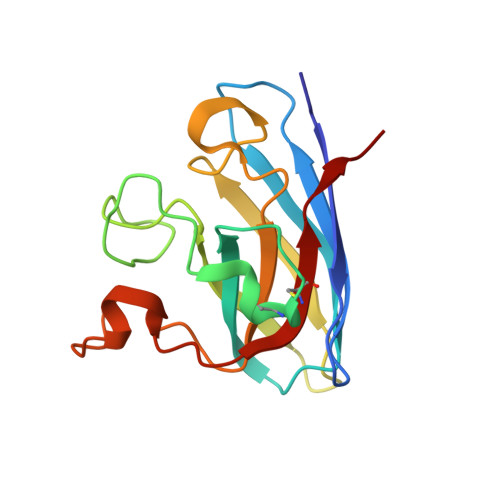Assessment of ligand binding at a site relevant to SOD1 oxidation and aggregation
Manjula, R., Wright, G.S.A., Strange, R.W., Padmanabhan, B.(2018) FEBS Lett 592: 1725-1737
- PubMed: 29679384
- DOI: https://doi.org/10.1002/1873-3468.13055
- Primary Citation of Related Structures:
5YTO, 5YTU, 5YUL - PubMed Abstract:
Cu/Zn superoxide dismutase-1 (SOD1) mutations are causative for a subset of amyotrophic lateral sclerosis (ALS) cases. These mutations lead to structural instability, aggregation and ultimately motor neuron death. We have determined crystal structures of SOD1 in complex with a naphthalene-catechol-linked compound which binds with low micro-molar affinity to a site important for oxidative damage-induced aggregation. SOD1 Trp32 oxidation is indeed significantly inhibited by ligand binding. Our work shows how compound linking can be applied successfully to ligand interactions on the SOD1 surface to generate relatively good binding strength. The ligand, positioned in a region important for SOD1 fibrillation, offers the possibility that it, or a similar compound, could prevent the abnormal self-association that drives SOD1 toxicity in ALS.
Organizational Affiliation:
Department of Biophysics, National Institute of Mental Health and Neurosciences (NIMHANS), Bangalore, India.

















